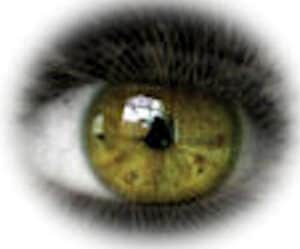Video Magnifiers and CCTVs
Video magnifiers and CCTvs vary in size, but are basically a camera, a screen to view what the camera ‘sees’, and a light source. The size will determine its usefulness for various reading tasks. While most video magnifiers are hand-held and portable, most CCTV units requires its own space on a desktop.
Both have some of the same features:
- More than one magnifying level;
- True color mode is seeing the colors on the screen as they appear on the page;
- Inverse mode is the capability to reverse print to white on a black background; and
- Other color modes, such as yellow print on either a blue or black background, or the reverse which would be blue or black print on a yellow background.
Those are the similarities. Here are the differences:
Video Magnifiers
These are found in different sizes. Simplified, they can be categorized as mini, standard, and large.
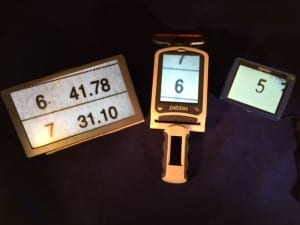
The minis are in the 3 inch screen size (measured on the diagonal). Small video magnifiers can be easily carried in pockets or handbags. They may not have as many features as the larger units, but are adequate for the tasks you may need it for when out and about. Things like reading menus and price tags and are convenient to have for those reasons.
Standard or medium size video magnifiers have the advantage of the larger screen. Their screens are about 4 to 5 inches. The larger the screen, the greater the capability for practical magnification. Maybe a little too bulky for a pocket, but fit will into handbags and backpacks. These may have a few more features such as auto shut off, memory cards, external input and outputs, and distant viewing capability. They have the same use as the mini size. Although bulkier, they do offer more flexibility for viewing modes.
The large size video magnifiers have screens in the 7 inch range with some type of stand for support. Although still portable, they may weigh over a pound. These are a better choice for short term reading, filling out forms, and sitting at a table reading the newspaper or scanning the mail. These also have features like auto shut off, low battery indicators, external input and output jacks, and memory cards.
CCTVs
CCTVs can be broken down to 3 basic types:
- Desktop CCTV;
- Portable CCTV: and
- Computer compatible.
Desktop[ CCTV:
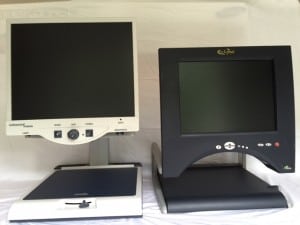
The desktop behemoths includes a monitor, camera. light source, and a movable XY table (in most cases). This is a good choice for long-term reading. It has a large screen which gives a wide field of view and many customization options. This is a good choice for long term reading. The XY table can be locked into position and the CCTV can be used for other things like hobbies.
Portable CCTV
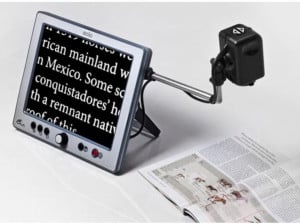
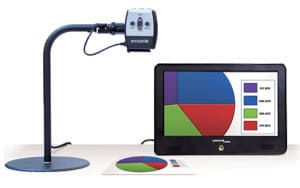
There are also portable CCTVs which are a camera unit and a monitor for viewing what the camera sees. Because of the portability and the flexibility of the camera, this is a good option for students and meeting attendees.
Computer Compatible Camera
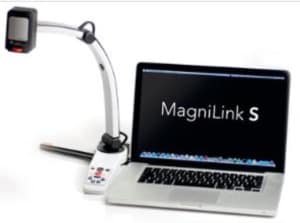
S computer compatible camera
The desktop or laptop commuter compatible CCTVs are a camera unit which attaches to a computer along with installation software, allowing it to use the monitor and processing capability of the computer to expand the function of the camera. This is a fantastic option for students and those in the work force.
Mouse-type Video Magnifiers

This is a hybrid unit. The camera is a large computer- style mouse, with a light source. The mouse is either attached by a cable, or by wireless Wi-Fi to a monitor, television, or computer. Features vary from a stripped down grey scale with a fixed magnification levels to those with true color modes and variable magnification. As the mouse is rolled over the print, that print is viewed and magnified on the monitor. This is a good choice for home use for reading of flat or curved surfaces. like cans and bottles.
Overall, the mouse-camera is a fairly economical choice.
